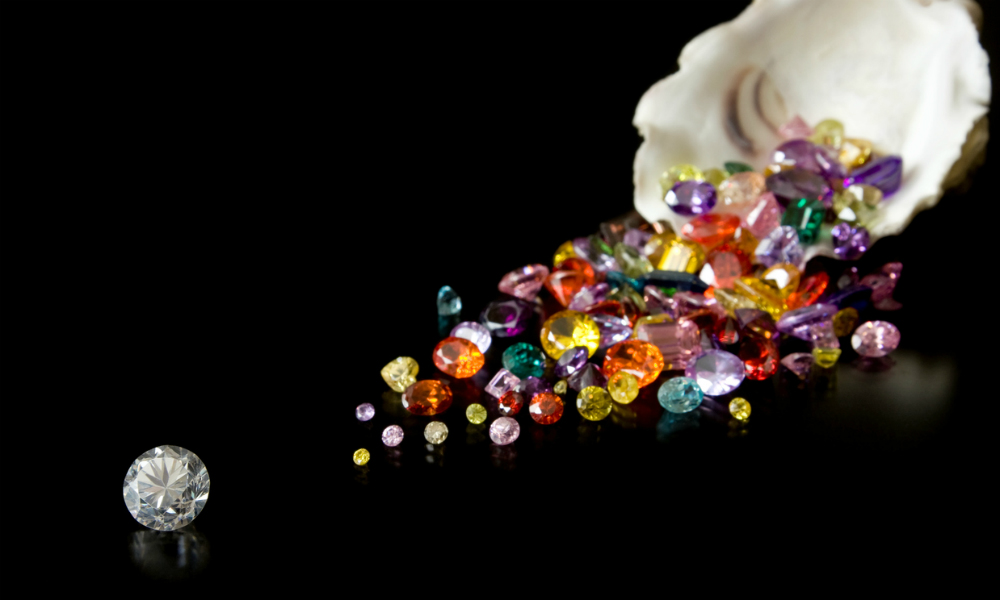Diamonds
How do naturally colored diamonds end up with some of the many amazing hues that we attempt to recreate in much more common colorless stones? In truth, there are a number of factors that must fall into place in order for the Earth to create these colorful treasures
naturally. Here’s a brief overview of the conditions necessary to create these fancy gemstones.
You probably know that diamonds are created by carbon that is both heated and compressed, then pushed to the surface of the Earth (or close to it), resulting in the colorless stones that are the bread and butter of the diamond industry. However, no diamond is perfect, and it is the impurities in the stone that can cause coloration. This works in a couple of ways. First, carbon is rarely found in a completely undiluted state. Often there are other elements in the vicinity that can lead to slight discoloration in the finished product, which is why colorless diamonds are so desirable.
However, even rarer than completely colorless diamonds are those that display the intense color indicative of mass amounts of some other element in the environment. Boron, for example, will lead to rare blue hues in diamonds while nitrogen will produce the much more common yellows and browns. Radiation will produce a green color (uh, kryptonite, anyone?) and unusual stresses that trap electrons in the stone are thought to result in pink or reddish hues. But that’s not all there is to it.
Flaws within the stone can magnify or even cause coloration because of the way light entering the stone is refracted. For this reason, a stone that is already colored may be more appealing with a flaw since it can greatly enhance the color, pushing it into the class of a “fancy colored diamond”, which makes it exponentially more valuable.
It’s pretty interesting that the impurities and flaws in diamonds can actually add to their value, but remember that they have to achieve fancy color status in order to be worth more. If the color is pale in a stone, it will hold a low value since it is neither colorless nor saturated (making it one of the most common geological blunders). So before you buy a rare colored stone, make sure it meets proper standards of rarity so that you get a diamond that is as valuable as it is desirable.
About Author
Related posts
Custom Jewelry, Diamonds
The Story of Diamonds and Diamond Jewelry
The diamond begins its centuries-long story in the 1st century AD with a memorable statement…
Diamonds
Diamond Fluorescence: Is It a Good Thing?
There are many different factors you should take into account when purchasing a diamond. After…
Diamonds
How Are Colored Diamonds Made?
The clear sparkle of a diamond in the sunlight bedazzles with its brilliance. For a…
Diamonds
Understanding M Color Diamonds – Quick Guide
Shine bright like a diamond – but what kind? There are clear diamonds, bold diamonds,…
Diamonds
How to Clean Your Diamond Ring?
Glistening, brilliant, enchanting, and all-around beautiful – it’s very easy to fall in love with…
Santayana Jewelry Store Coral Gables



























































Leave a reply